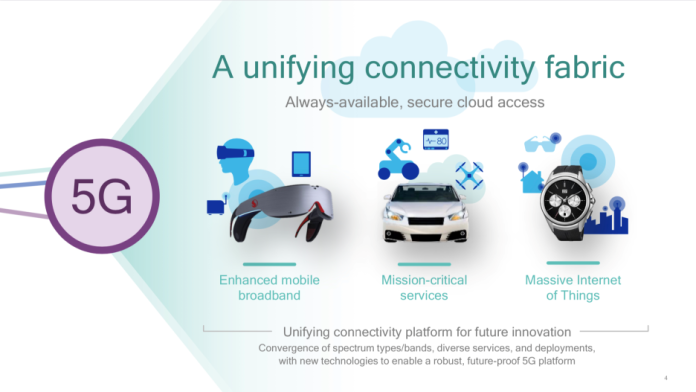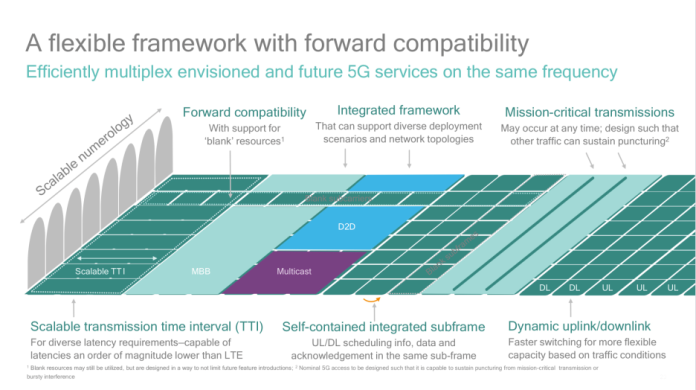From its early conception, 5G aimed to enable three main categories of use cases: enhanced mobile broadband (eMBB), massive IoT deployments, and mission-critical applications. The biggest challenge to supporting all three use cases with a single network architecture is the disparate and often conflicting requirements that each use case demands.
Networks designed to support eMBB are required to be optimized for high speed, low-to-medium latency, and profitable, efficient use of capacity. Massive IoT networks, on the other hand, need to be low-cost with a narrow bandwidth, low control plane overhead, and high reliability, while mission-critical networks require high speed, low latency, and very high reliability.
5G Phase 1 (Release 15) focused primarily on eMBB, but with the recent finalization of Phase 2 (Release 16), features aimed at the latter two markets have also now been added to the standard. As such, the industry is now poised to start delivering on the full 5G promise.
Whereas previous generations of mobile communications standards focused primarily on improvements in speed and latency, 5G, while also improving along those lines, adds a third dimension of enhancement: adaptability. Earlier generations did have some limited adaptability around channel sizes, power control, and band interoperability. However, just like 5G introduces orders-of-magnitude improvement in speed and latency, so, too, does it for adaptability. This is the key to supporting such a wide disparity of requirements and allows 5G to essentially use the best tool for the job.

A unifying connectivity platform will be required for future 5G innovation, scaling across diverse use cases and devices. (Image: Qualcomm)
Between Release 15 and 16, 5G has introduced several features that make it a true evolutionary and generational leap. For example, 5G New Radio (5G NR) brought to bear not only the ability to support low-band (sub-1 GHz) and mid-band (1- to 6-GHz) frequencies but also larger and faster bandwidths and channel sizes in the millimeter-wave (mmWave) spectrum (high band) while leveraging the legacy 4G infrastructure.
On the surface, it might appear that this is a relatively trivial change, adding a new RF front end to support these bands. However, understanding the different channel structure and control plane requirements to support such a wide variety of spectrum and use cases with the same architecture makes it clear that RF band support is only part of the issue.
Other 5G framework features that enable the support of channel adaptability, as it pertains to bandwidth, payload, and use case, include but are not limited to scalable transmission time intervals (TTIs), scalable numerology with scaling of subcarrier spacing, and variable channel access methodologies. In previous generations, TTIs were a fixed time interval. With scalable TTIs, 5G networks are now able to utilize shorter TTIs to optimize for low latency and high reliability, while longer TTIs are used to optimize for spectral efficiency.
Scalable numerology and subcarrier spacing efficiently helps to address the different channel bandwidths that are available at the different spectrum bands (especially with the inclusion of high band channel widths), which are critical for heterogenous network architectures in which there is a mix of macro/micro, outdoor/indoor, and low/mid/high band coverage.
Variable channel access refers to how a device requests and utilizes channel resources from the network. In normal mobile broadband operation, channel access is initiated with a handshake request by the mobile device to the network via the control channel. That request is then acknowledged by the network and authenticated to ensure that the subscriber is, in fact, entitled to network resources.
Upon authentication, the mobile device is assigned a traffic channel resource that is communicated via a Layer 3 message. Once the traffic channel is acquired, the device will need to then maintain synchronous operation and transmit only during certain times. However, this type of channel access would not be viable in IoT or most mission-critical applications given the latencies involved.
Consequently, 5G now allows for both grant-free uplink transmissions as well as puncturing. Grant-free transmissions eliminate overhead signaling for resource requests and allow the device to receive channel resources without the handshaking described earlier. Once the traffic channel is acquired, puncturing allows for data to be transmitted asynchronously with the channel framework design, ensuring that other user traffic can withstand interference and sustain payload integrity.

5G requires a flexible framework to support a variety of deployments and requirements while providing forward-compatibility for future use cases and features. (Image: Qualcomm)
These 5G NR features not only allow the 5G network to support the various bands and use cases but also to seamlessly interoperate between them. This is crucial in the 5G network of the near future given the aforementioned heterogenous network architectures that mobile network operators are deploying. The various layers of coverage that these architectures deliver is essential in order to best meet the dynamic, real-time requirements of their subscribers.
At any one location, a network might need to support applications that need all three bands and/or use cases. It doesn’t require a big leap of imagination to envision a scenario where one subscriber at a café is engaged in online gaming with real-time video chat, another user is accessing their enterprise cloud environment while their embedded blood glucose meter is sending updates to an online medical service, and the stoplight at the corner is providing cellular vehicle-to-infrastructure updates of non-line-of-sight sensor information to vehicles up to three to four blocks away. All these diverse workloads require different vectors of bandwidth, latency, and reliability.
Each of these use cases might be best served by a different band and/or channel configuration to optimize performance, capacity, and reliability as required. This is in part due to the characteristics of channels residing in certain parts of the wireless radio spectrum. For example, channels in the high band, due to their wide channel sizes and high frequencies, are best suited for providing high throughput and low latency. However, the tradeoff is a lower propagation range given that short wavelengths don’t penetrate walls very well and take more power to travel large distances.
In contrast, the low band provides a large area footprint due to their longer wavelengths but has less peak and sustained throughput. The mid band is somewhere in the middle and can provide a balance of both worlds as needed.
What’s the killer app?
Anytime the industry arrives at a new generational launch, the question of what the killer app might be for the new features isn’t far behind. Usually the answer is that “we don’t know yet,” or that it will make existing things better and make more viable what was once only barely feasible. Sometimes, the argument is that the enhanced capabilities will spur innovation of solutions that we have not yet considered.
In the case of 5G, however, TIRIAS Research posits that, given what has already been discussed above, there might actually already be a killer app for 5G that brings all of the new capabilities together in a way that helps address an ever-increasingly relevant issue — namely, the call for increased remote interactions due to Covid-19. TIRIAS Research has dubbed this potential killer app “Closed Loop xR.”
While most of the industry has contemplated extended reality (XR), it has done so primarily with the thought of just receiving augmented, virtual, or mixed-reality information in either local or remote environments. This one-way flow of information is, in essence, Open Loop xR.
However, TIRIAS Research extends this idea, taking that information and applying intelligence (artificial or otherwise) to it, which is used to actuate a physical response in the local/remote environment from which the original information was obtained, thus closing the loop (e.g., Closed Loop xR). This type of application, while solving the need for increased remote interactions, can be made viable only by taking advantage of key 5G capabilities. These include gigabit throughput, sub-10-ms latency, and 5G availability in low, mid, and high bands, together with support for eMBB, IoT, and mission-critical devices on one network architecture.
Ironically, while this application was already being contemplated, it has been accelerated and elevated to potentially killer-app status by the pandemic that has caused the whole world to decelerate. Due to the increased demand for remote interactivity brought about by Covid-19, this potential killer app, while previously being nice to have, is now a must-have.
Recommended
How engineers work remotely during the COVID-19 pandemic
Primed and ready to go
With Phase 1 in commercial ramp and Phase 2 finalized, 5G is ready to deliver on its promise. Led by mobile network operators globally, 5G implementation has seen accelerated adoption compared with previous generations from network launches to device availability and new use-case innovation.
Additionally, as opposed to pushing this technology to the masses, it is being pulled not only by consumers but by every major industry from retail to education, mining to manufacturing, and even finance and transportation. As successful as it has already been, it is still only the beginning. For mobile network operators, who have previously had to make uncertain bets regarding infrastructure and spectrum investments, what might be the most optimistic part of it all is that 5G has the potential of actually making good on the promise of “if you build it, they will come.”
Advertisement
Learn more about Qualcomm





